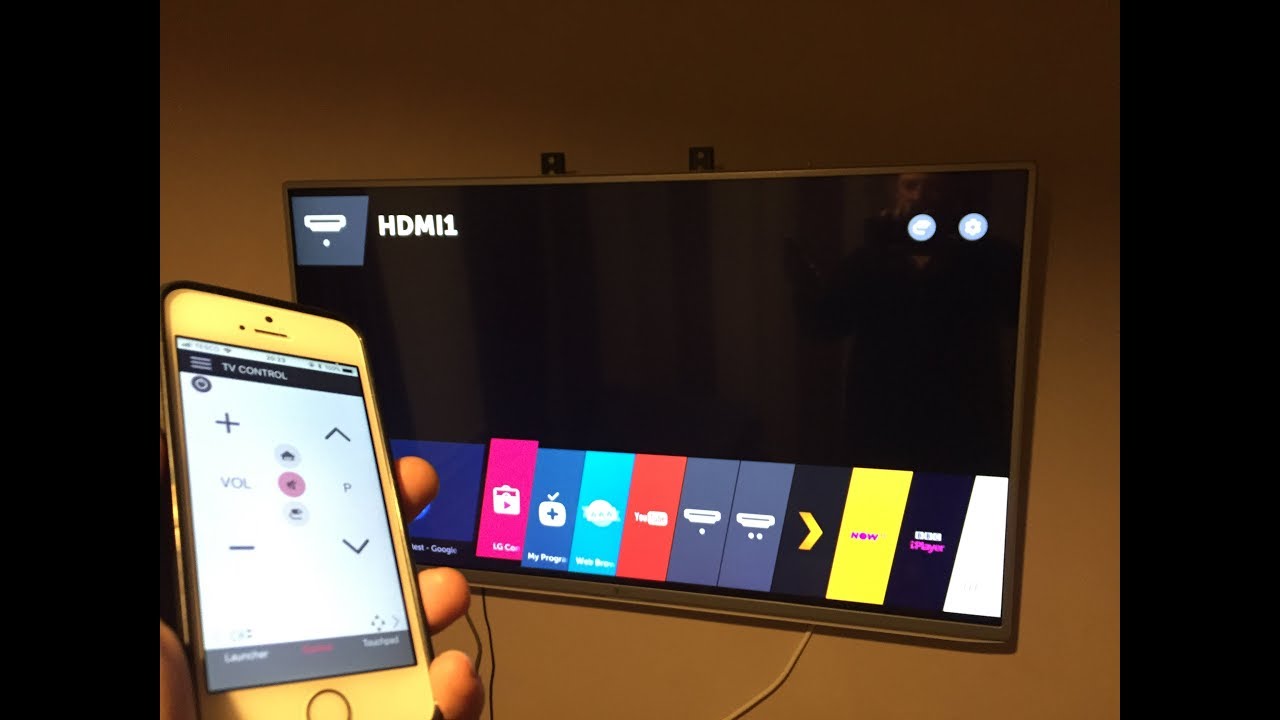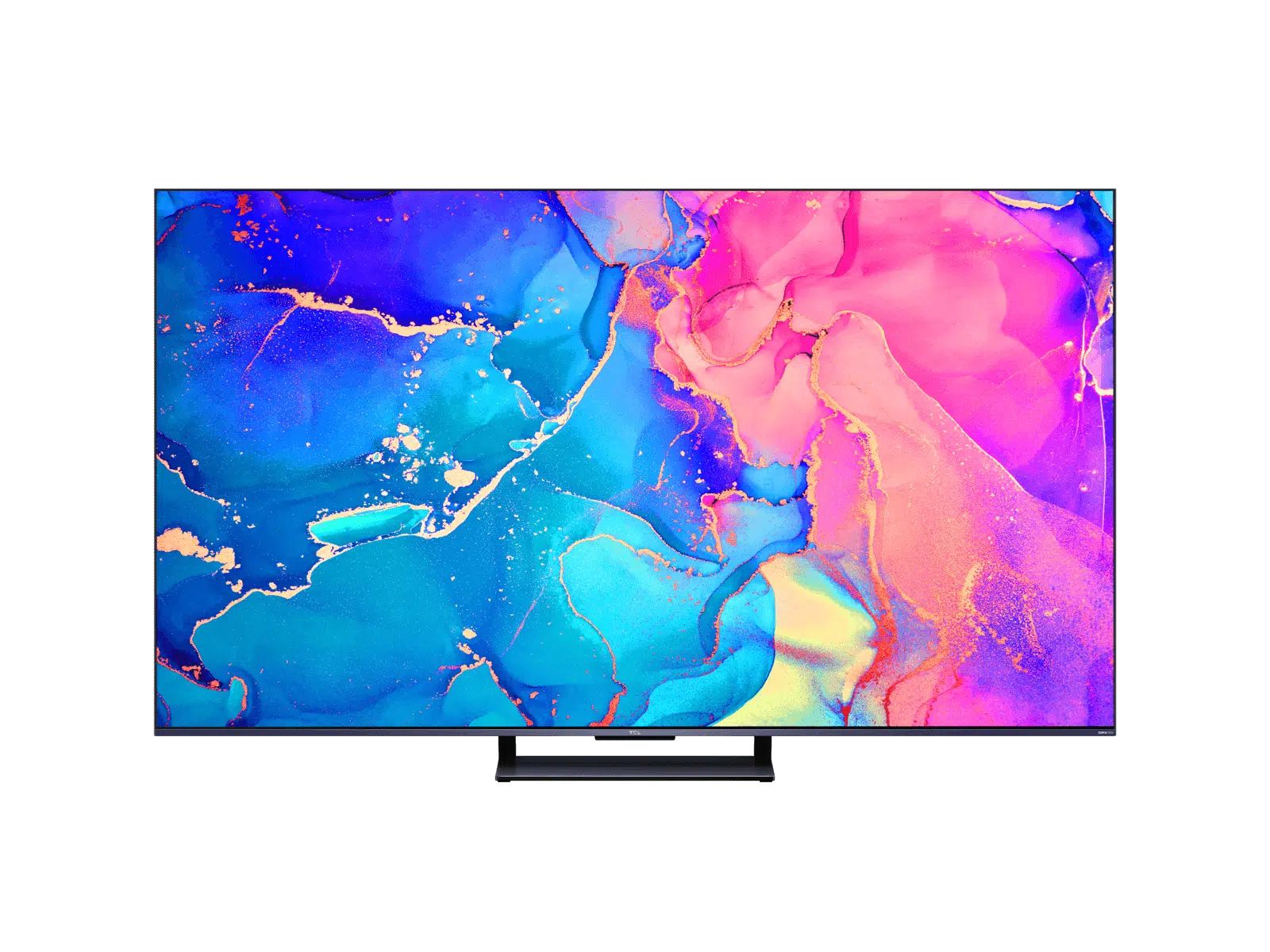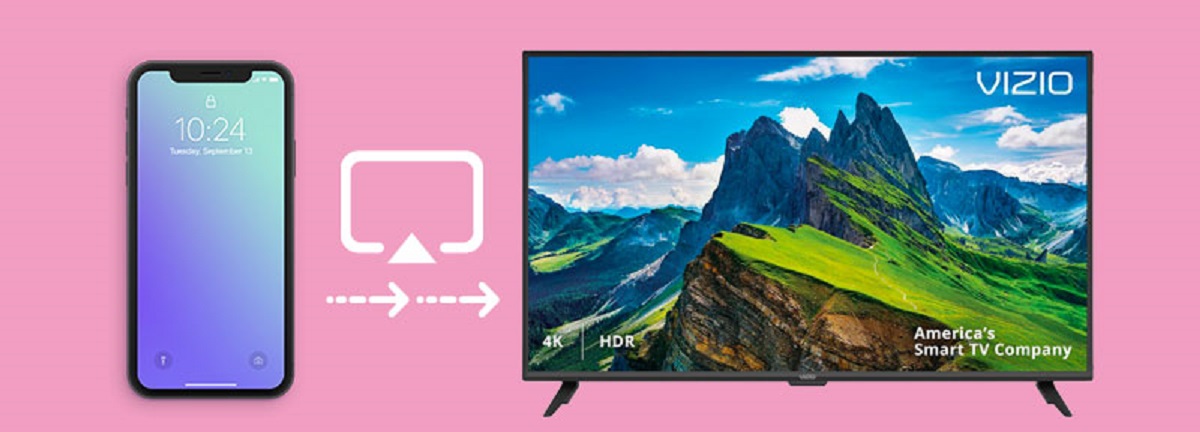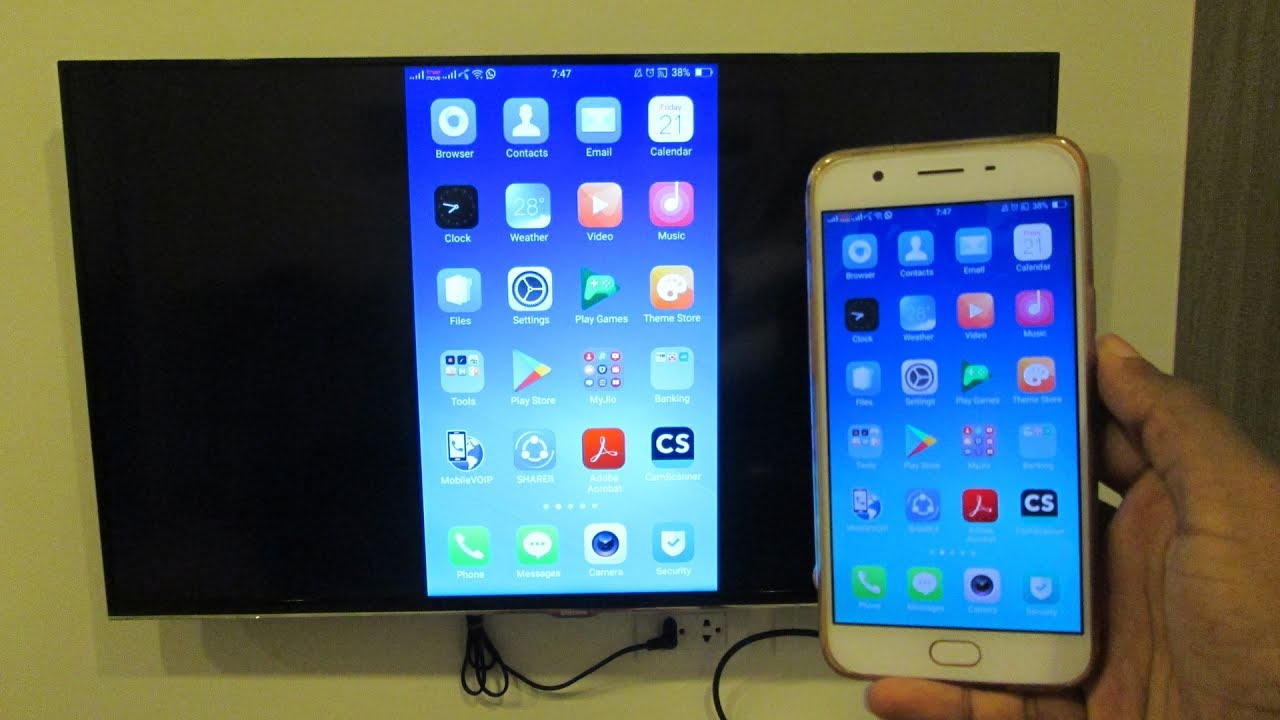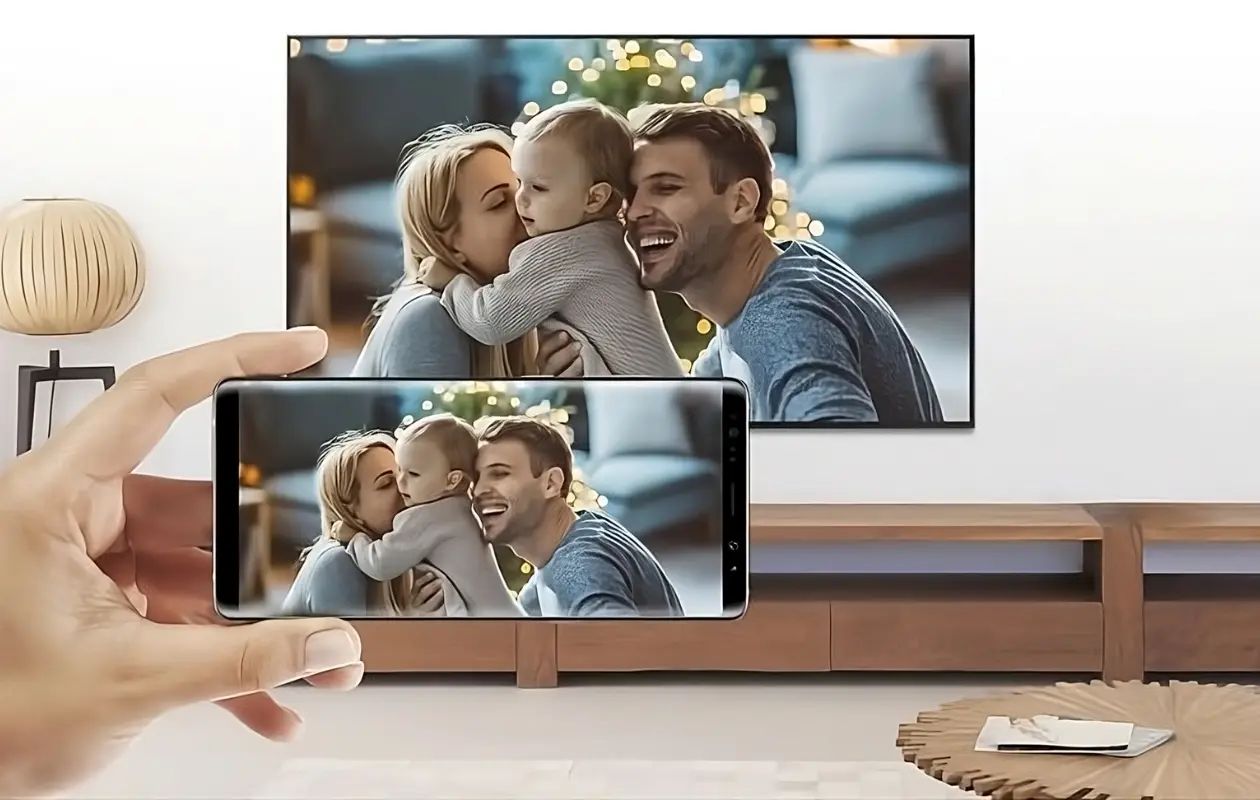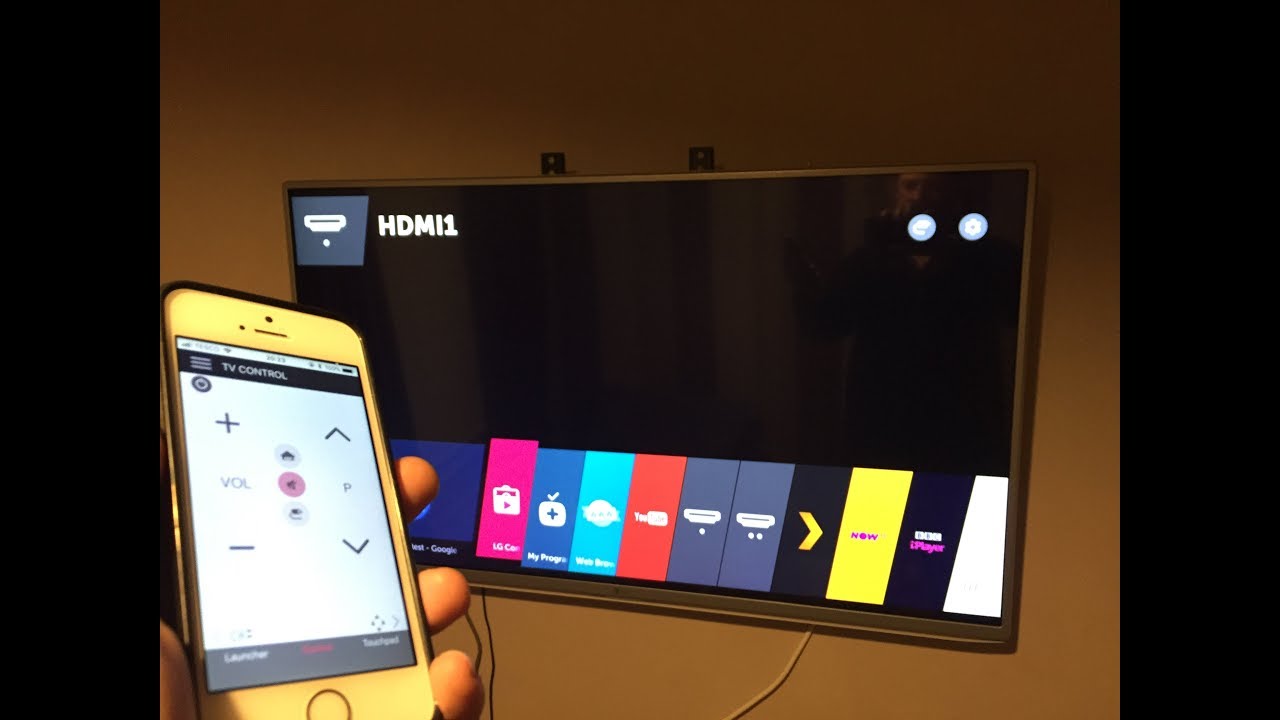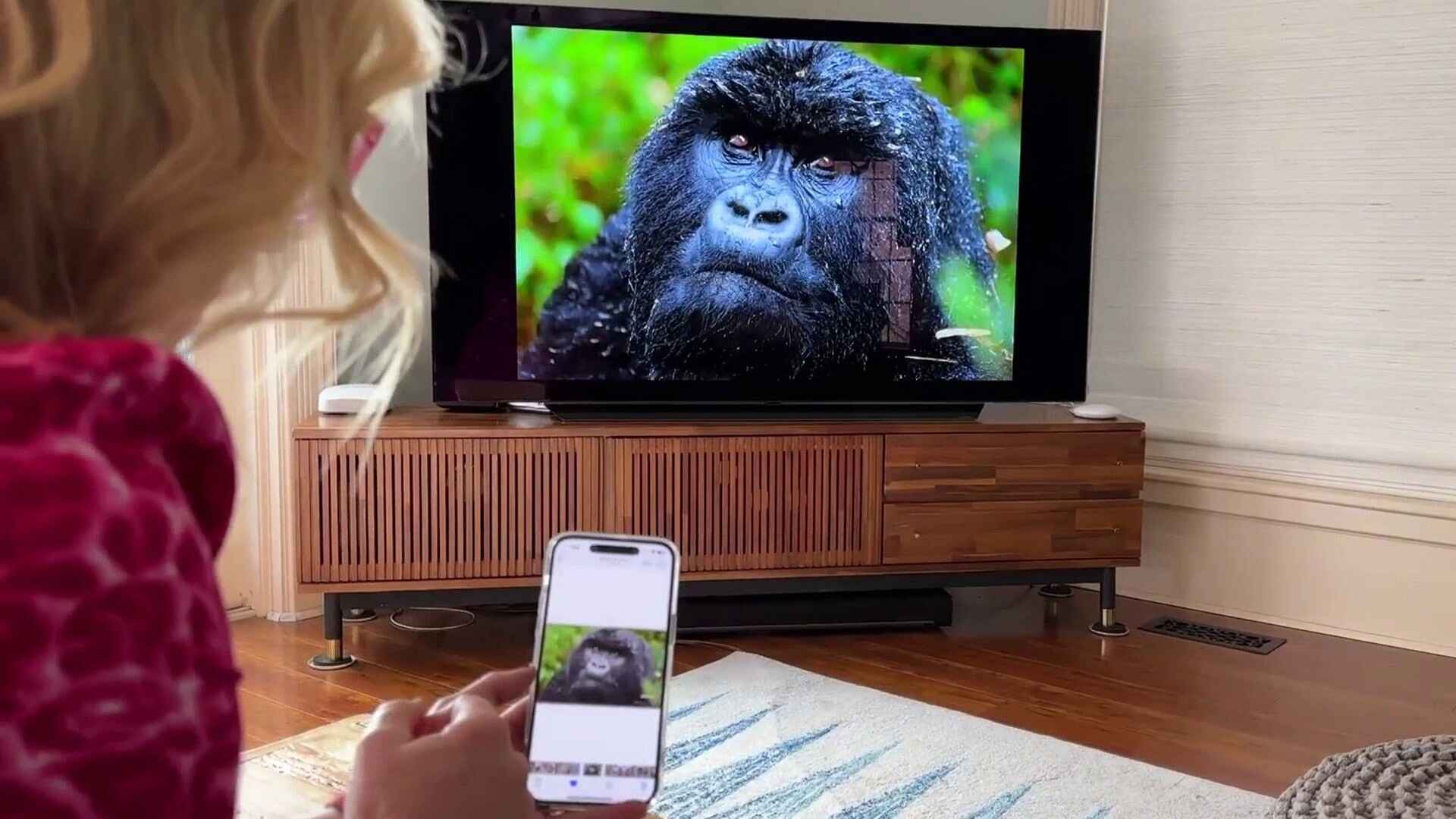Introduction
Welcome to the digital age, where a smartphone can do so much more than just make calls and send messages. With the evolution of technology, smartphones have become a powerful multimedia device capable of streaming videos, playing games, and even accessing social media platforms. However, sometimes you may find yourself wanting to enjoy your smartphone content on a larger screen, like your smart TV.
Connecting your phone to a smart TV opens up a world of possibilities, allowing you to enjoy your favorite movies, TV shows, and videos on a bigger display, share photos and videos with family and friends, or even play mobile games with a more immersive experience.
In this article, we will explore various methods you can use to connect your phone to a smart TV. Whether you have an Android or iOS device, there are several options available, each with its own advantages. From screen mirroring to using an HDMI cable or wireless adapters, we’ll cover all the possibilities to help you find the method that suits your needs.
Before we dig into the details, it’s important to note that the specific steps and requirements may vary depending on the make and model of your phone and smart TV. It’s always a good idea to consult your device manuals or manufacturer’s websites for detailed instructions tailored to your specific setup.
Now, let’s dive into the various methods you can use to connect your phone to a smart TV and unleash the full potential of your multimedia experience.
Method 1: Screen Mirroring
Screen mirroring is one of the simplest and most straightforward methods to connect your phone to a smart TV. It allows you to mirror the content of your phone’s screen directly onto the TV, providing a seamless viewing experience.
To use screen mirroring, both your phone and smart TV need to support this feature. Most Android devices have built-in screen mirroring functionality, commonly referred to as “Cast” or “Smart View.” On the other hand, iPhones and iPads have the “AirPlay” feature, which enables screen mirroring with compatible devices.
To begin screen mirroring, follow these steps:
- Ensure that your phone and smart TV are connected to the same Wi-Fi network.
- On your phone, swipe down from the top of the screen to open the notification panel.
- Look for the screen mirroring or casting icon, usually represented by an antenna or rectangle with waves.
- Tap on the screen mirroring or casting icon to open the screen mirroring settings.
- Select your smart TV from the list of available devices.
- Your phone’s screen should now be mirrored onto the smart TV. You can navigate through your phone’s apps, play videos, or even use it as a remote control.
It’s important to note that screen mirroring may have some limitations. The quality of the mirrored screen may vary depending on the speed and stability of your Wi-Fi connection. Additionally, some apps or content may not be compatible with screen mirroring due to copyright restrictions or technical limitations.
Screen mirroring is an excellent option for sharing photos, videos, or presentations on a larger screen or for enjoying your favorite streaming services. It’s a versatile feature that allows you to make the most out of your smartphone and smart TV combination.
Method 2: HDMI Cable
If you prefer a direct and reliable connection between your phone and smart TV, using an HDMI cable is the way to go. This method allows you to enjoy high-definition audio and video quality, making it ideal for watching movies, gaming, or even giving presentations.
To connect your phone to a smart TV using an HDMI cable, follow these steps:
- Check if your phone has an HDMI-out port. Some Android phones have a micro or mini HDMI port, while iPhones and iPads require an HDMI adapter.
- Connect one end of the HDMI cable to your phone’s HDMI port or adapter.
- Connect the other end of the HDMI cable to one of the HDMI input ports on your smart TV.
- Turn on your TV and switch to the appropriate HDMI input channel.
- Your phone’s screen should now be displayed on the TV. You may need to adjust the display settings on your phone to ensure the proper aspect ratio and resolution.
Using an HDMI cable offers a direct connection that ensures minimal latency and high-quality video output. It also allows you to charge your phone simultaneously while it is connected to the TV, ensuring that your battery doesn’t drain during extended multimedia sessions.
This method is particularly useful for gaming enthusiasts who want to experience mobile games on a larger screen with better audio and visual effects. Additionally, it is a convenient option for watching videos, browsing the internet, or sharing content from your phone with friends and family.
Keep in mind that not all smartphones support HDMI output, so it’s essential to check your phone’s specifications or consult your phone’s manufacturer for compatibility before attempting to use this method.
Overall, using an HDMI cable is a reliable and straightforward way to connect your phone to a smart TV and enjoy your favorite content on a bigger screen with improved audio and video quality.
Method 3: Chromecast
If you’re looking for a wireless and versatile way to connect your phone to a smart TV, Chromecast is an excellent option. Chromecast is a small device that plugs into your TV’s HDMI port and allows you to stream content from your phone, tablet, or computer directly to the TV.
To use Chromecast, follow these steps:
- Plug the Chromecast device into your TV’s HDMI port.
- Connect the Chromecast to a power source using the provided USB cable and power adapter.
- Make sure your phone and Chromecast are connected to the same Wi-Fi network.
- Download and install the Google Home app on your phone.
- Open the Google Home app and follow the on-screen instructions to set up your Chromecast.
- Once set up, launch compatible apps on your phone, such as YouTube, Netflix, or Spotify.
- Look for the “Cast” icon within the app (usually located in the top or bottom corner).
- Tap the “Cast” icon and select your Chromecast device from the list.
- The content will now be streamed from your phone to the smart TV through the Chromecast device.
Chromecast offers a seamless streaming experience, allowing you to easily control playback, adjust volume, and switch between apps directly from your phone. It supports a wide range of apps and services, making it a versatile option for streaming movies, music, and even playing games on your TV.
In addition to streaming content from various apps, Chromecast also allows you to mirror the entire screen of your phone onto the TV. This opens up the possibility of sharing presentations, browsing the internet, or even displaying photos and videos stored on your device.
Chromecast is compatible with both Android and iOS devices, making it a versatile option for users with different phone brands. It offers a convenient and wireless solution to connect your phone to a smart TV, taking your multimedia experience to a whole new level.
Method 4: Apple TV
If you’re an Apple ecosystem user and own an iPhone, iPad, or Mac, connecting your phone to a smart TV can be accomplished effortlessly with Apple TV. Apple TV is a dedicated streaming device that allows you to access a wide range of content, including movies, TV shows, music, and even games, all from the comfort of your living room.
To connect your iPhone to a smart TV using Apple TV, follow these steps:
- Connect the Apple TV device to your smart TV using an HDMI cable.
- Ensure that your iPhone, iPad, or Mac and Apple TV are connected to the same Wi-Fi network.
- On your iPhone or iPad, swipe down from the top right corner of the screen to open the Control Center. On a Mac, click on the AirPlay icon in the menu bar.
- Tap on the “Screen Mirroring” or “AirPlay” option.
- Select your Apple TV from the list of available devices.
- Your iPhone or iPad screen will now be mirrored on the smart TV through Apple TV.
With Apple TV, you can not only mirror your iPhone’s screen but also access various apps, stream content, and enjoy an immersive entertainment experience. Furthermore, Apple TV offers features like Siri integration, allowing you to use voice commands to navigate and interact with the device.
In addition to streaming content from your iPhone, Apple TV gives you access to popular apps and services such as Netflix, Hulu, and Amazon Prime Video. It provides a user-friendly interface and seamless integration with other Apple devices, making it an attractive choice for Apple enthusiasts.
Apple TV also supports AirPlay, which enables you to stream content from your iPhone or iPad directly to the smart TV without mirroring the entire screen. This allows you to enjoy high-quality media playback and control the content from your Apple device.
If you’re invested in the Apple ecosystem and value seamless integration and a wide range of entertainment options, Apple TV is an excellent choice to connect your iPhone or iPad to a smart TV and access a world of multimedia content.
Method 5: Miracast
If you have an Android device and a Miracast-enabled smart TV, you can easily connect your phone to the TV using Miracast. Miracast is a wireless display technology that allows you to mirror your Android phone’s screen directly onto the TV, providing a seamless streaming experience.
To use Miracast, follow these steps:
- Ensure that your Android device and Miracast-enabled smart TV are connected to the same Wi-Fi network.
- On your Android device, go to the Settings menu and tap on the “Display” or “Screen Mirroring” option.
- Tap on the “Cast screen” or “Connect to device” option.
- Select your Miracast-enabled smart TV from the list of available devices.
- Your Android device’s screen will now be mirrored on the TV.
Miracast offers a convenient way to share photos, videos, presentations, and other content from your Android device to the big screen. It allows you to enjoy your favorite streaming services, play games, and even browse the internet with enhanced visibility and control.
One of the advantages of using Miracast is that it works without an internet connection, as it pairs your phone directly with the TV. This can be particularly useful in situations where Wi-Fi connectivity is limited or not available.
However, it’s important to note that not all Android devices and smart TVs support Miracast. Some older models may require a Miracast adapter or dongle to enable this functionality. Additionally, certain smartphone manufacturers may use a different term for Miracast, such as “Smart View” or “Wireless Display.”
To ensure compatibility, check your Android device’s settings or consult the manufacturer’s guidelines. If your device does not support Miracast, you can explore alternative methods, such as screen mirroring, HDMI cables, or wireless adapters.
In summary, Miracast is an excellent option for Android users who want to connect their phones to a smart TV wirelessly. It provides a simple and efficient way to mirror your screen and enjoy your favorite content on a larger display.
Method 6: DLNA
If you want to connect your phone to a smart TV and have a home network with DLNA (Digital Living Network Alliance) support, DLNA can be a convenient method to stream media files directly from your phone to the TV.
DLNA allows you to access and play media content stored on your phone, such as photos, videos, and music, on your smart TV without the need for additional cables or devices. It works by leveraging your home Wi-Fi network to establish a connection between your phone and the TV.
To use DLNA, follow these steps:
- Ensure that both your phone and smart TV support DLNA.
- Connect your phone and smart TV to the same Wi-Fi network.
- On your phone, enable DLNA sharing by going to the Settings menu and locating the DLNA or Media Sharing option.
- Select the media files you want to stream to the TV from your phone’s media library.
- On your smart TV, navigate to the DLNA or Media playback option and search for available devices.
- Select your phone from the list of detected devices.
- Your selected media files will now be displayed and can be played directly on the smart TV.
DLNA provides a convenient way to share and enjoy your personal media collection on a larger screen without the need for physical connections or external devices. It allows you to stream videos, view photos, and play music stored on your phone with ease.
One advantage of DLNA is its compatibility across different devices and operating systems, making it accessible for users with various phone models and smart TV brands. However, it’s important to note that DLNA support and interface may vary between devices, so the exact steps and options may differ based on your specific setup.
DLNA is an excellent option for individuals who primarily want to enjoy their own media content on a smart TV. It offers a seamless and convenient way to share and stream media files wirelessly, enhancing your multimedia experience in the comfort of your own home.
Method 7: Wireless Display Adapter
If you’re looking for a versatile and portable solution to connect your phone to a smart TV, a wireless display adapter can be a great option. A wireless display adapter is a small device that connects to your TV’s HDMI port and allows you to mirror your phone’s screen wirelessly.
To use a wireless display adapter, follow these steps:
- Plug the wireless display adapter into your TV’s HDMI port.
- Ensure that both your phone and the wireless display adapter are connected to the same Wi-Fi network.
- On your phone, go to the Settings menu and look for the Wireless Display or Display Mirroring option.
- Select the wireless display adapter from the list of available devices.
- Your phone’s screen will now be mirrored onto the smart TV.
Wireless display adapters offer a convenient way to enjoy your phone’s content on a bigger screen without the clutter of cables. They are compatible with various phone models and operating systems, making them a versatile choice for users with different devices.
One of the advantages of wireless display adapters is their portability. They are compact and lightweight, allowing you to easily carry them and use them with different TVs or display devices. This makes them ideal for business presentations, sharing media with friends and family, or even for gaming on a larger screen.
It’s important to note that the functionality and compatibility of wireless display adapters may vary. Some adapters may require additional software installation on your phone or have specific app requirements for seamless screen mirroring. Always refer to the manufacturer’s instructions and guidelines for the specific wireless display adapter you are using.
Wireless display adapters provide a hassle-free and convenient way to connect your phone to a smart TV, allowing you to enjoy your favorite content on a larger screen with ease.
Method 8: Roku Streaming Stick
If you’re looking for a comprehensive and user-friendly way to connect your phone to a smart TV, the Roku Streaming Stick is a fantastic option. The Roku Streaming Stick is a compact device that plugs into your TV’s HDMI port and turns it into a powerful streaming platform.
To connect your phone to a smart TV using the Roku Streaming Stick, follow these steps:
- Plug the Roku Streaming Stick into your TV’s HDMI port.
- Ensure that both your phone and the Roku Streaming Stick are connected to the same Wi-Fi network.
- Download the Roku mobile app on your phone and launch it.
- Follow the on-screen instructions to set up and connect the Roku Streaming Stick to the app.
- Once connected, you can navigate through various streaming channels and content on your phone and send them to your TV.
The Roku Streaming Stick offers a wide range of streaming options, including popular services like Netflix, Hulu, Disney+, and more. It provides a user-friendly interface and a convenient mobile app that allows you to control the streaming experience from your phone.
With the Roku mobile app, you can search for content, browse through channels, and even use your phone as a remote control for your smart TV. This means you can easily stream your favorite movies, TV shows, and videos directly from your phone to the TV with just a few taps.
In addition to streaming content from popular services, the Roku Streaming Stick also offers the ability to mirror your phone’s screen onto the TV. This allows you to share photos, videos, presentations, and even play mobile games on the big screen.
Roku devices are known for their simplicity, extensive channel selection, and regular software updates, ensuring that you have access to the latest features and content. Whether you’re a casual viewer or a binge-watcher, the Roku Streaming Stick is a versatile and reliable option to connect your phone to a smart TV and enhance your entertainment experience.
Conclusion
Connecting your phone to a smart TV opens up a myriad of possibilities for enjoying multimedia content on a larger screen. In this article, we’ve explored various methods to connect your phone to a smart TV, each with its own advantages and compatibility requirements.
Screen mirroring is a convenient option that allows you to mirror your phone’s screen directly onto the TV, providing a seamless viewing experience. HDMI cables offer a direct and reliable connection, ensuring high-definition audio and video quality. Chromecast and Apple TV provide wireless streaming options, enabling you to access a wide range of apps and content. Miracast and DLNA enable wireless connectivity for Android users, while a wireless display adapter offers a portable and versatile solution. Finally, the Roku Streaming Stick provides a comprehensive streaming platform with an extensive channel selection.
When deciding which method to use, consider factors such as device compatibility, available features, and your specific needs and preferences. It’s important to note that the steps and requirements may vary depending on your phone and smart TV models, so consult the respective manuals or manufacturer’s websites for detailed instructions tailored to your setup.
Whether you want to stream movies, share photos and videos with friends, or enjoy gaming on a larger screen, connecting your phone to a smart TV allows you to unlock the full potential of your multimedia experience.
With the variety of methods available, you can choose the option that best suits your needs and embark on a journey of enhanced entertainment possibilities. So, grab your phone, pick the method that works for you, and enjoy your favorite content on the big screen of your smart TV!









